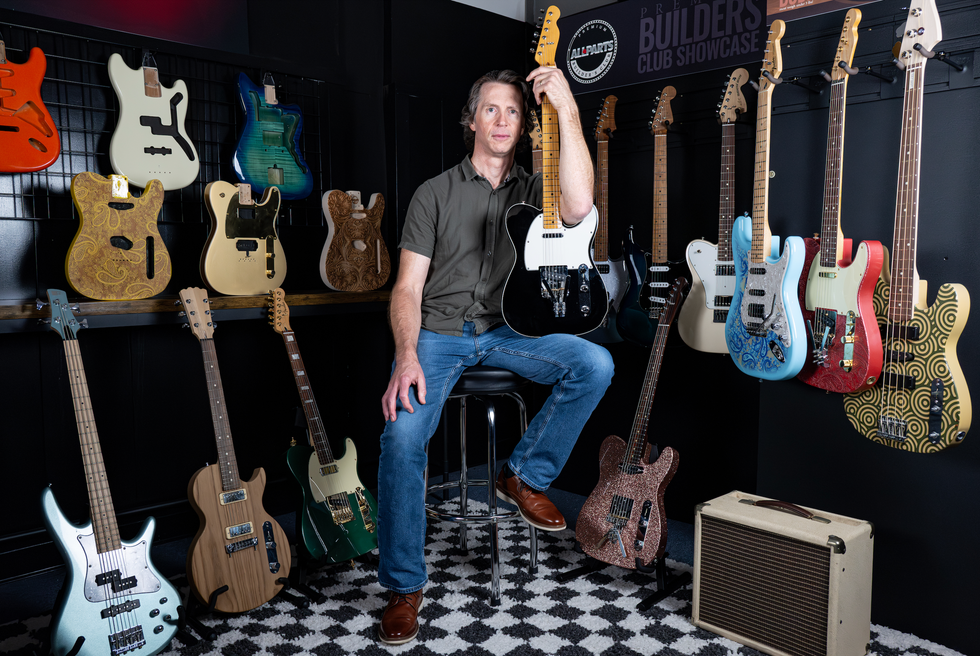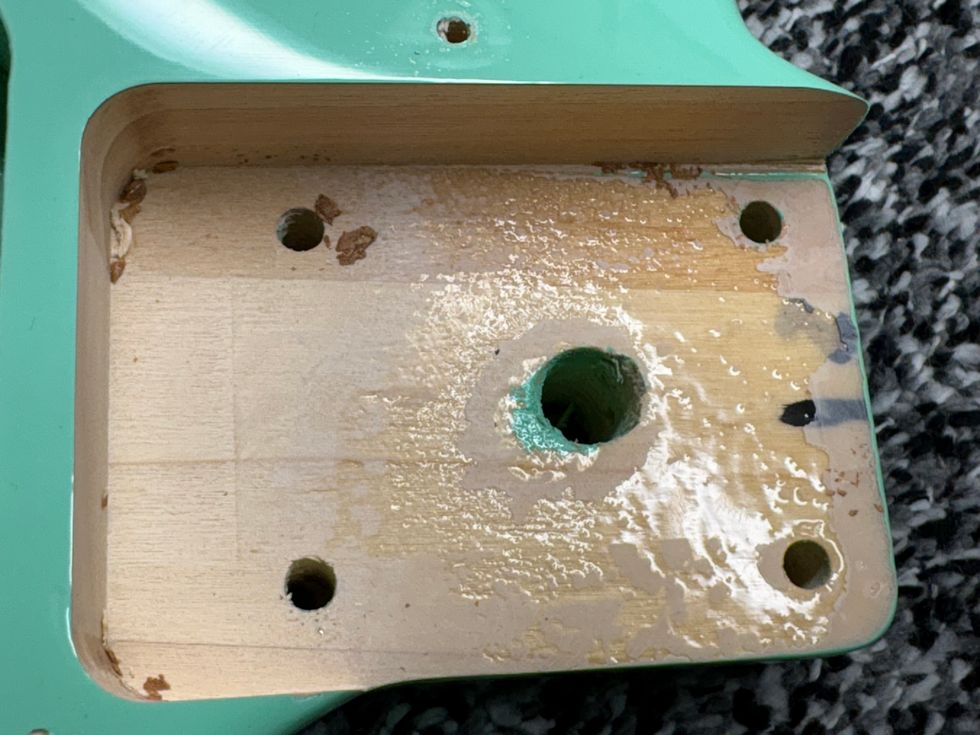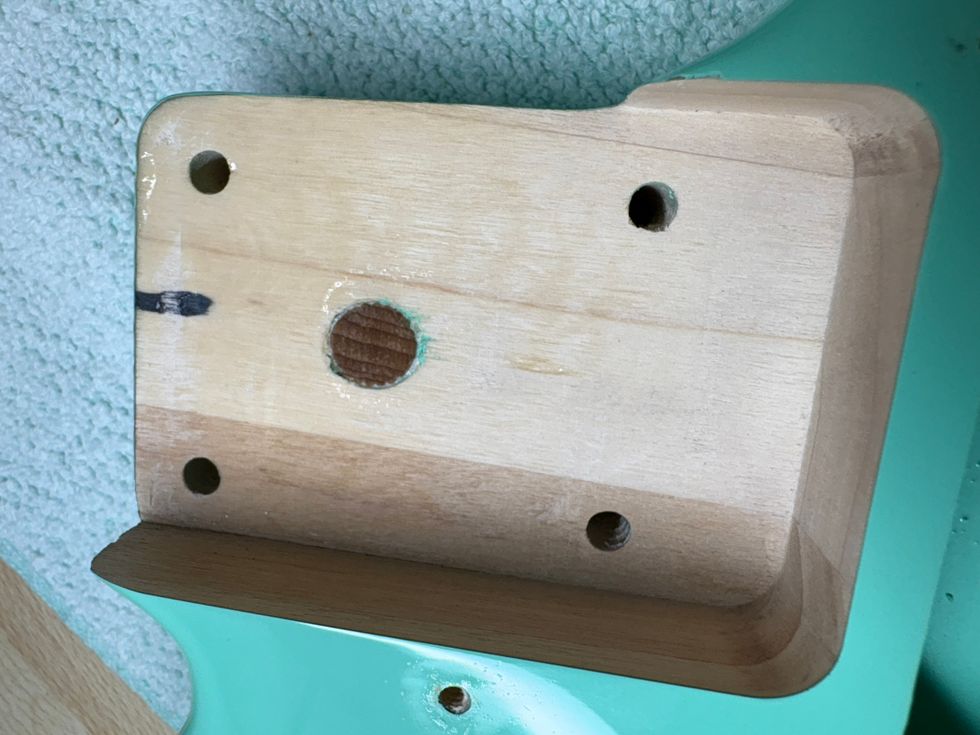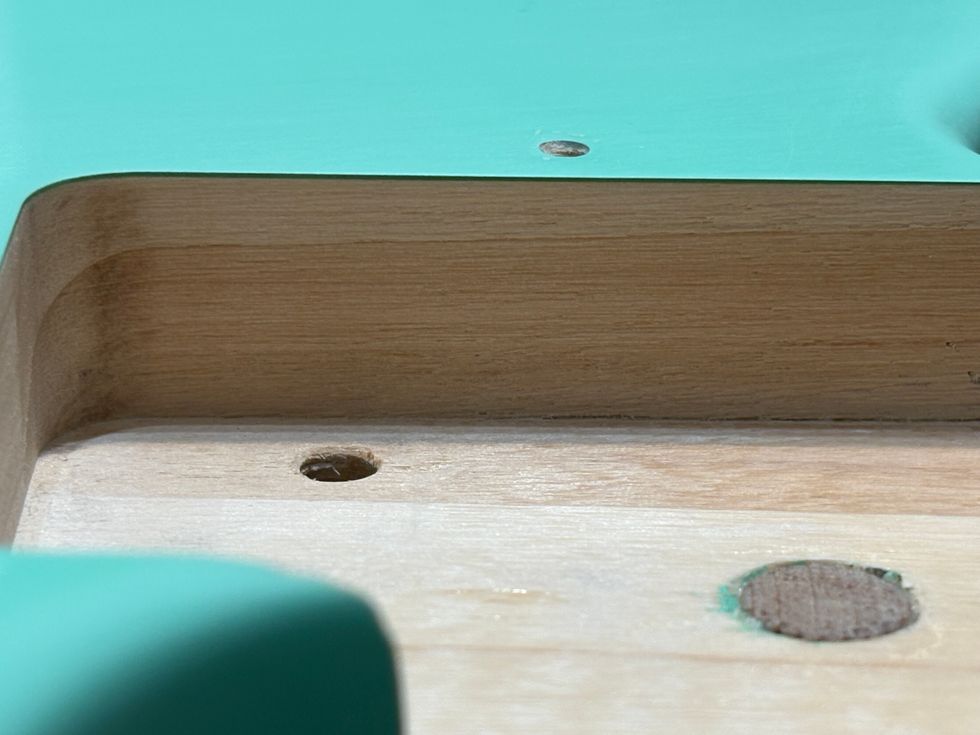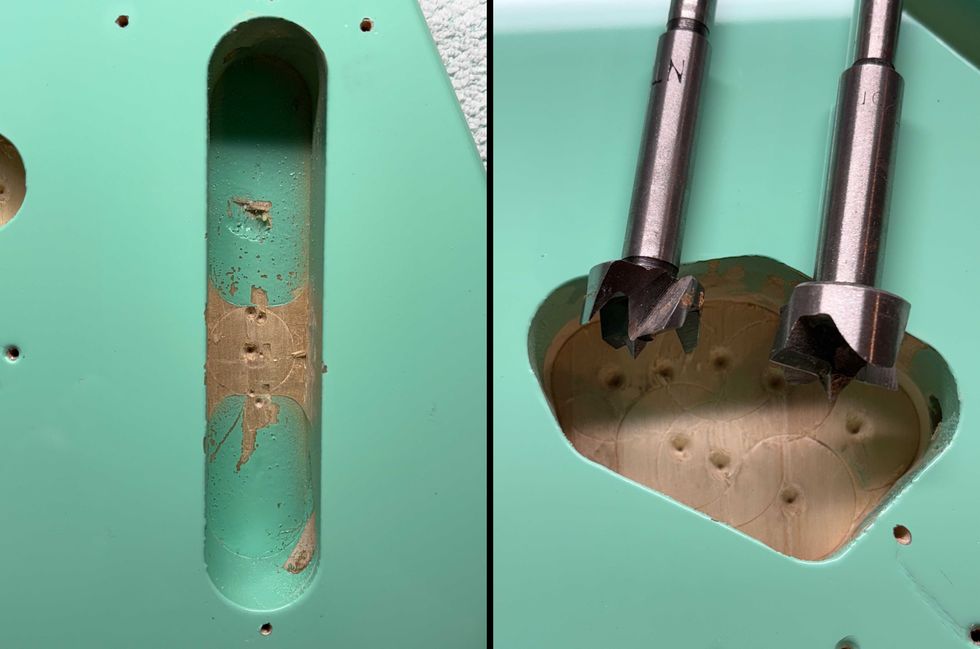We asked our readers to get their mods out. Here are some of the coolest.
SHANE KELLY: STEAMPUNK STRADIVARIUS
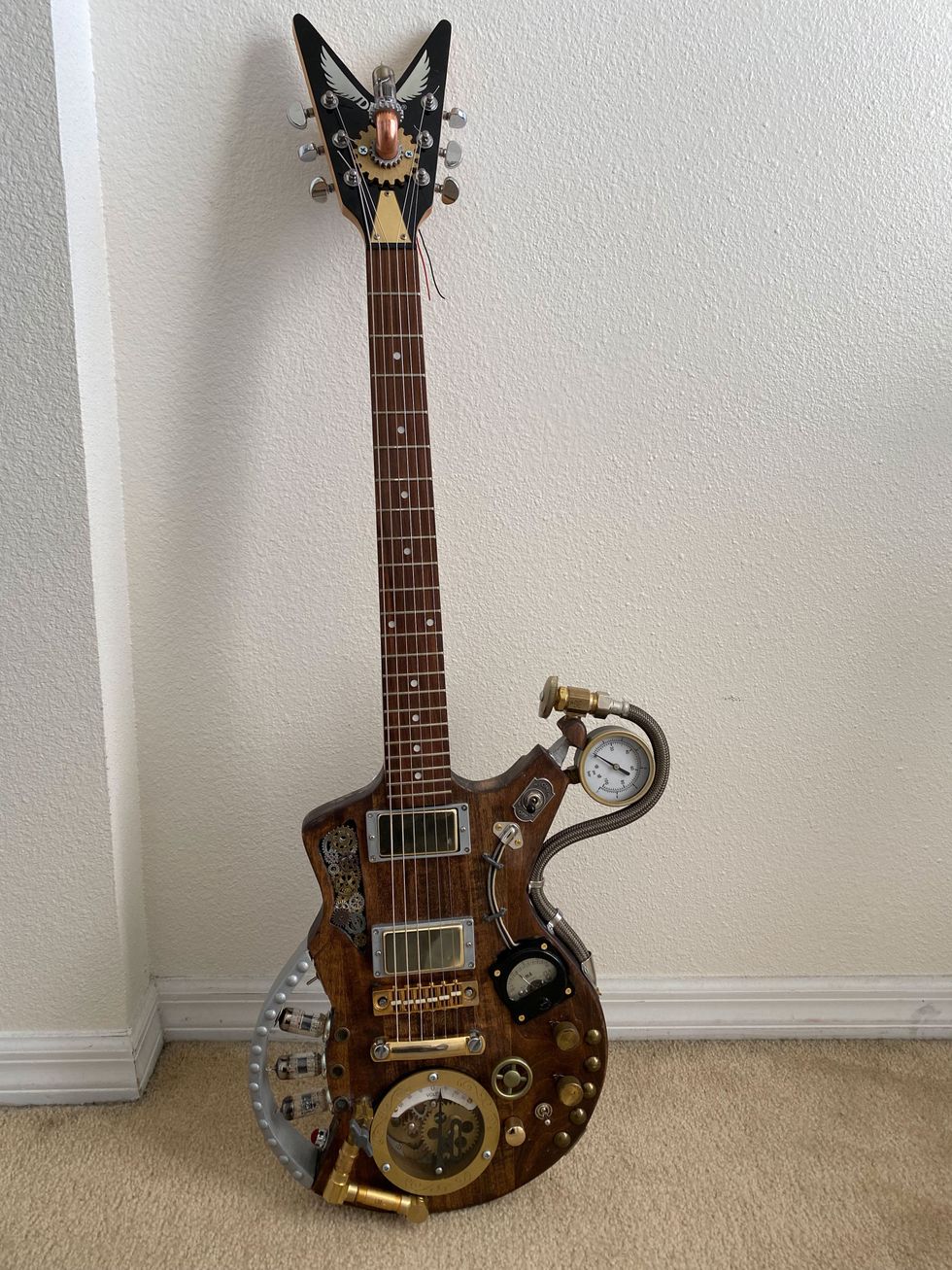
When Shane Kelly grabbed this mid-2010s Dean Cadillac X at a pawnshop for $100, he saw it as something more. After some routing, the removal of a black finish, and the raiding of a local hardware store, it’s now a steampunk tone machine. He notes: “While the hardware”—all for show—“definitely adds weight, it is balanced out by the removal of wood, so it weighs about the same as a standard Les Paul.” How’s it sound? Kelly says it’s killer!
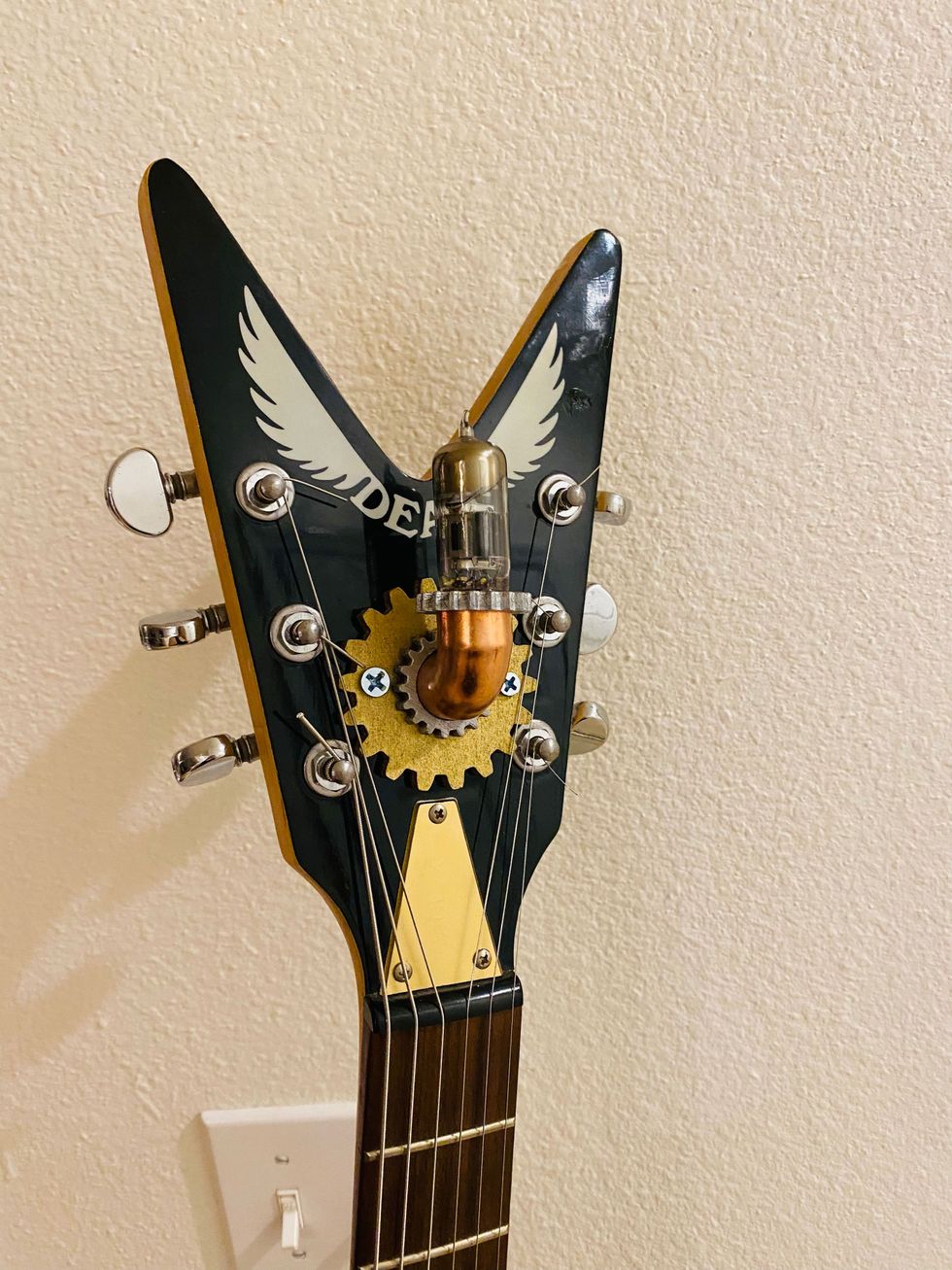
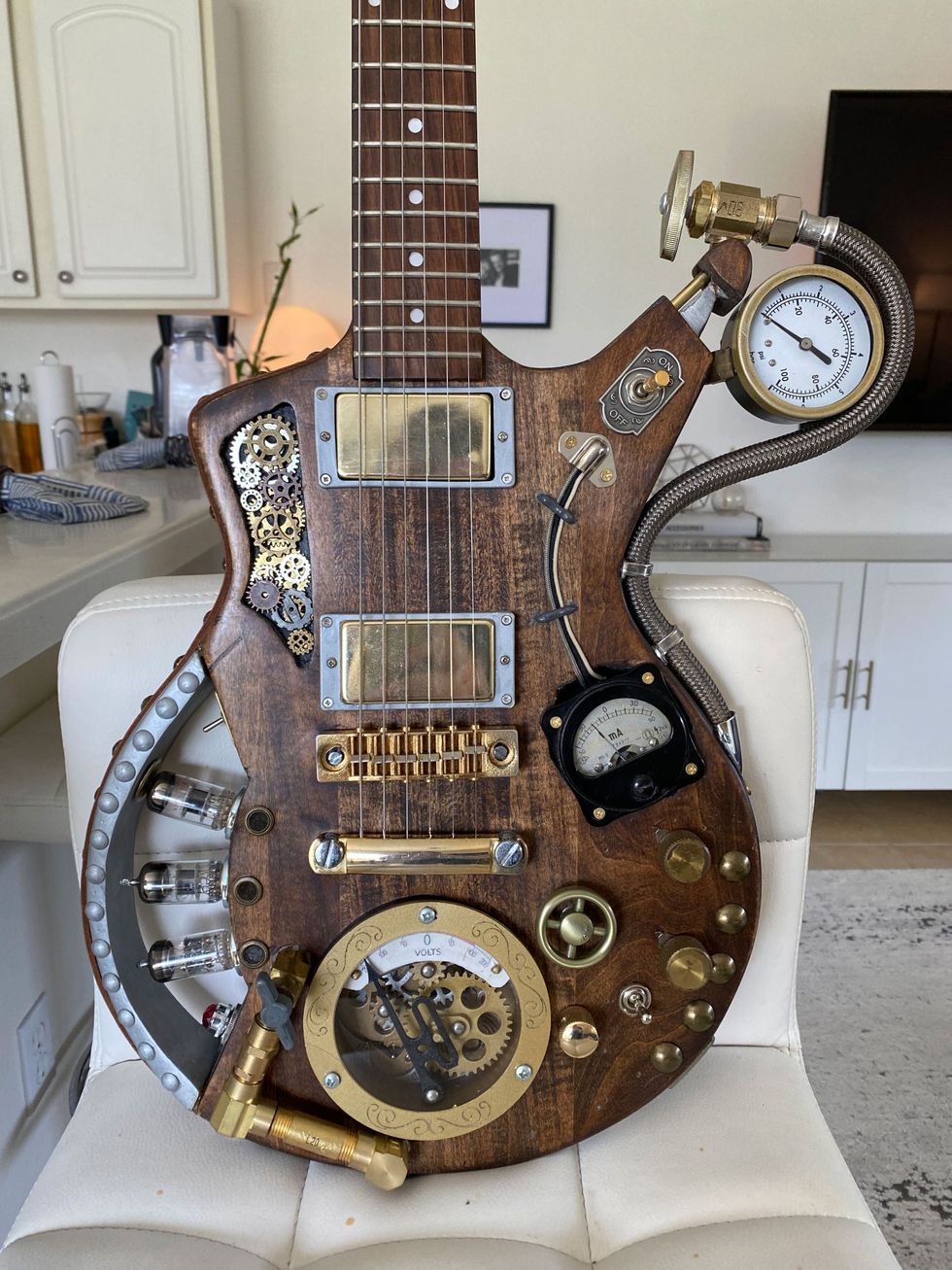
Check out the tube-driven headstock and gauges. We don’t think this is what ZZ Top meant when they wrote “Got Me Under Pressure,” but….
CARY CUMMINGS: SKULLDUGGERY

When Cary Cummings dreamt of jamming with Steve Vai in Pompeii (Was that during or post-lava, Cary?), this guitar was in his hands. So, he brought it to life. His “Skull Top” was originally a made-in-Mexico arctic-white Fender Standard Tele. He refinished the top, leaving the sides and back white, and added a Warmoth T-style neck, and Gotoh Tuners. Cummings also painted the neck dots and headstock to match the blue top. The original bridge was replaced with three Wilkinson-compensated brass saddles, and he added a Bigsby B50 vibrato. Electronics were swapped with a Sprague orange drop tone cap, a Seymour Duncan Jerry Donahue Lead Tele bridge pickup, and a Gibson Burstbucker Pro in the neck. Now it’s ready for Día de los Muertos.
JOHN HEINZ: GILDED GUILD

This alien was born as a Guild X-79 with a red finish that John Heinz scored at a guitar show—minus hardware and kinda trashed—for $35. He stripped and repainted it with auto lacquer: lapis-pearl blue over a black shade with color-change flakes. The original stop tailpiece got bumped for a Kahler trem, and Heinz installed an EMG and a Kent Armstrong pickup along with Grover tuners. He also carved a comfort cut into the back and made the aluminum pickguard. “It played and sounded great, but I found it a little uncomfortable to play, with the very long top horn,” he says. So, now this space critter may be in a galaxy far, far away. Heinz swapped it, along with some cash, for a Gibson Les Paul BFG.
LUIS MARCELO FERNÁNDEZ SEOANE: A HIGHLY PERSONALIZED STRAT
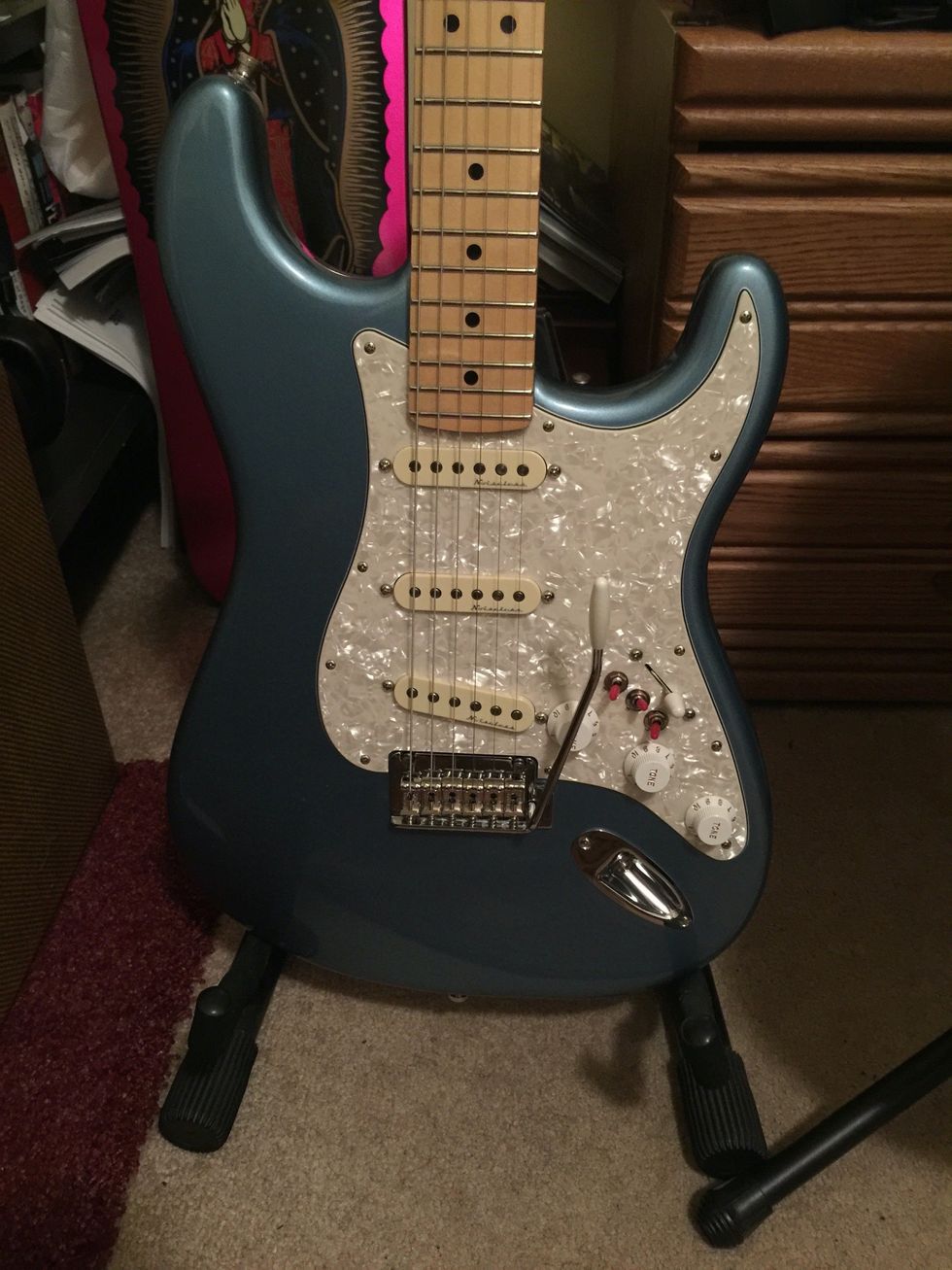
Here’s a partscaster that’s, well, the sum of its parts, if not more. The neck and body are from Fender.com, but the rest of his guitar is highly subjective. Luis Marcelo Fernández Seoane was seeking many switching options for its Fender Jeff Beck Hot Noiseless pickups. Check the pickguard and you’ll see an add-neck switch, a series/parallel switch, a blower switch, a middle tone control wired for the neck and middle pickups, and a bottom tone control for the bridge pickup. The blower switch is wired so he can choose the combination of pickups going straight to the output jack. “For not much more than a stock model, and much less than a Custom Shop offering, I got the Strat I always wanted,” Seoane says. His hotrod also includes a two-point Strat trem ordered with six vintage saddles and Schaller locking tuners. Plus, he steel-wooled the back of the neck for a more organic playing feel. The output is a Pure Tone stereo jack. Why? “I prefer the Pure Tone TRS-style jack, because even though I’m only using the tip and the sleeve, the unconnected ring provides an added measure of security,“ Seoane adds.
TATE FERGUSON: SIMPLY ELEGANT
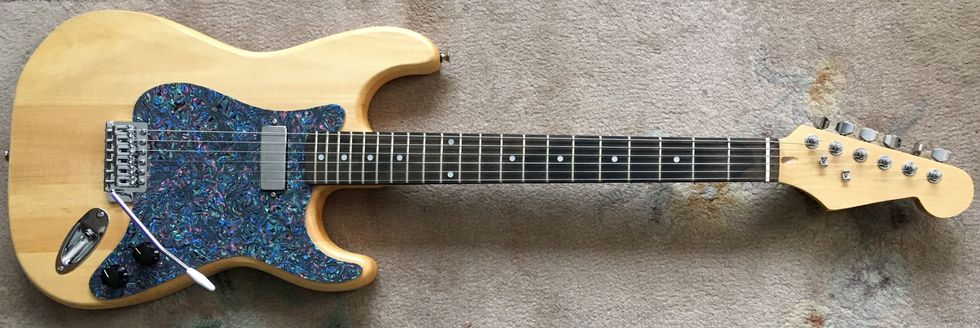
Here’s an S-style created after Covid ended Tate Ferguson’s gigs for a spell. Starting with a Muslady kit he bought on eBay for $76 including shipping, he did a little sanding, so the neck and body fit together well, and the bridge and tuners that came with the kit did the trick. He finished the body and the back of the neck with a few coats of Tru-Oil gunstock finish. Then things got real. The string slots on the kit’s plastic nut were too narrowly spaced, so Ferguson installed a nut he made from a dog-chew cattle bone he’d bought at a pet shop. “There’s enough bone for a dozen nuts on one of those,” he notes. “I’ve made guitar and mando nuts from scratch now and then, using the StewMac nut files I bought many years ago.” He also made the lovely pickguard from faux abalone, sourced via Amazon, and attached it with Velcro, and installed a Guitar Madness Songbird (Firebird-style) pickup. “The tone knob is a Fender no-load pot, and the knobs come from a long-defunct 1980s MXR limiter pedal,” adds the impressive recycler. Plus, the 3-spring whammy holds its tuning well. “I’ve been messing around with solidbody electric guitars since 1969, and I’m starting to get better at it,” Ferguson says, modestly.
NIKOLAS SIMON: BACK TO THE FUTURE
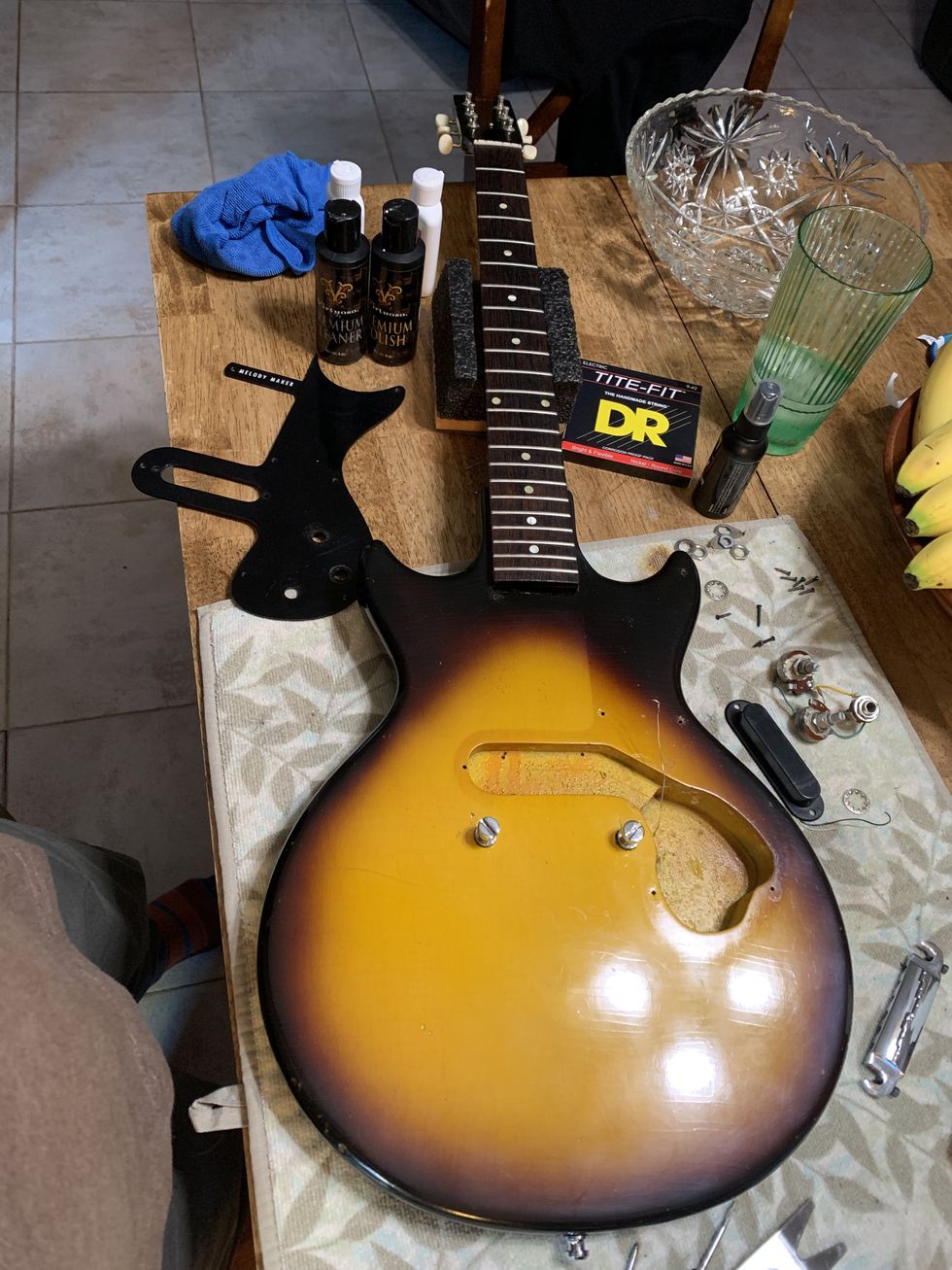
“In a world full of mods, I decided to bring my 1961 Gibson Melody Maker back to original spec,” says Nikolas Simon. So out went the Seymour Duncan Hot Stack Tele pickup. (That pickup’s base was shaved to fit in the original cavity without routing, and there was a push-pull pot for single-coil tone.) “I had a set of original early ’60s pots that were still wired from the factory, and sourced a 1964 pickup to complete the ‘mod’ for this versatile guitar,” Simon says.
SCOTT HASKITT: SWITCHED UP
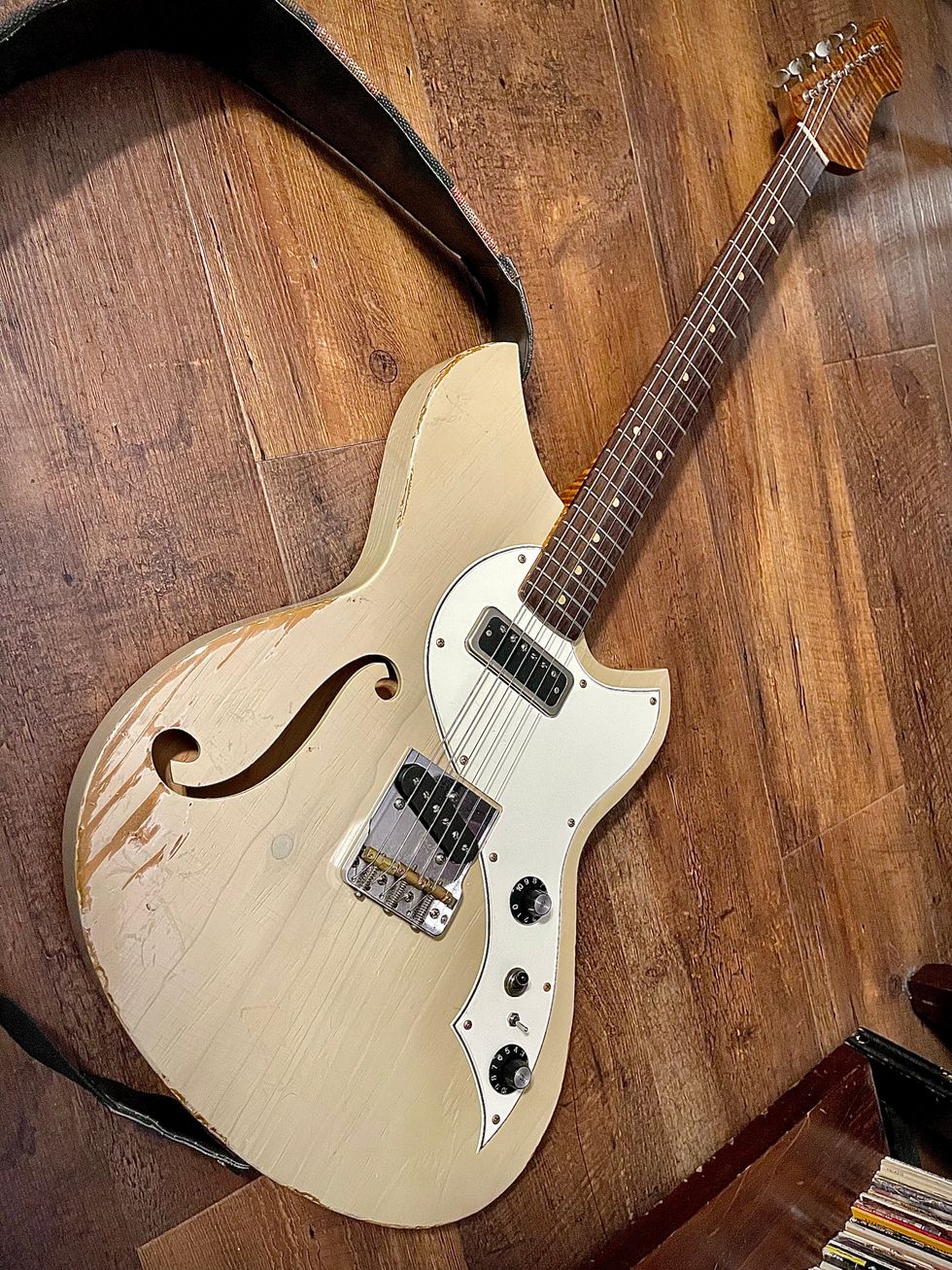
Scott Haskitt “absolutely fell in love with this guitar” when he got it, but also loves the idea of bridge and neck pickups with the same amount of highs.
After a few different pickups sets, he found a solution: installing a new tone cap and a bridge-resistor toggle on this Novo Miris T 2021. He also swapped in a Bliss humbucker (soapbar) and a T-Bar Bridge (with P-90 characteristics) by McNelly Pickups. “The DPDT on/on switch is wired to toggle between the bridge pickup with a 500k pot (up) and a 47k resistor in the circuit (down), so it sounds more equal to the neck pickup.”
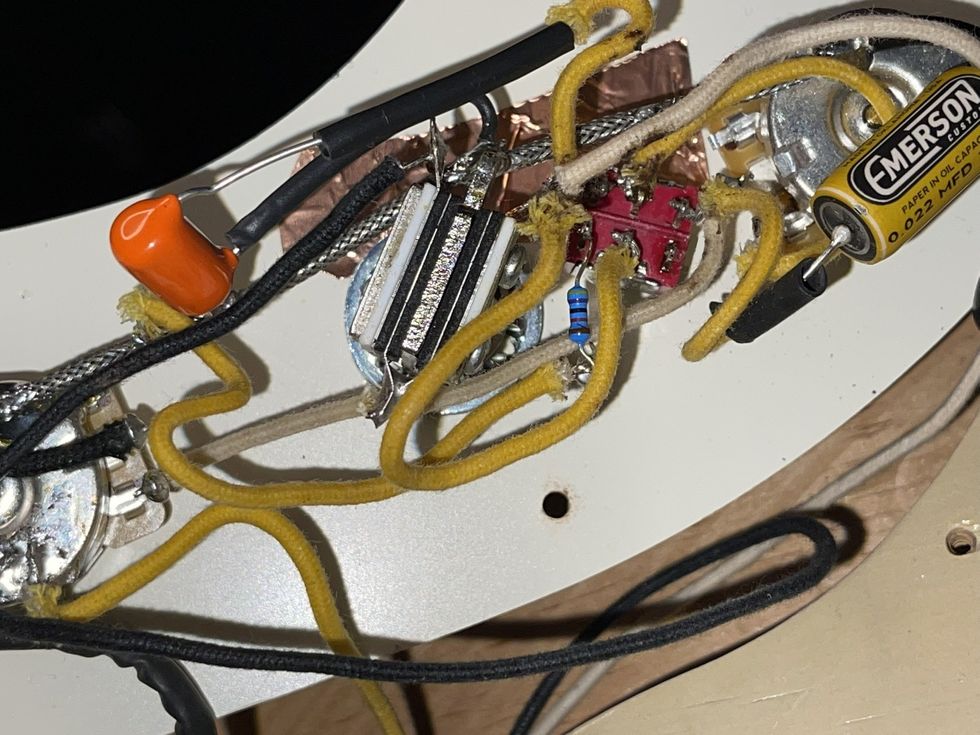
The neck pickup does not ever connect to the resistor. When the resistor is not engaged (up), the whole circuit uses the Novo stock .022 tone capacitor, and when the resistor is engaged (down), the whole circuit uses a 0.0015 capacitor, for completely different and more usable sounds with the tone pot rolled all the way off. The Novo uses 500k for both volume and tone pots.
KRISTOFFER HAGEN: THE “PG’S FAULT” MOD

Kristoffer Hagen says, “I fell deep in a rabbit hole of Premier Guitar mod articles.” In particular, “Bass Bench: Cheap and Easy Bass Mods,” from 2012, and “Three Must-Try Guitar Wiring Mods,” from 2014, inspired his project. It started with a B-stock Warwick RockBass that played well, but its active electronics didn’t provide the tones Hagen wanted. “The finish concept was stolen from a YouTube video,” he relates. “The color was supposed to be dark blue but turned out a little green. I settled on Nordstrand pickups because they looked unique.” The “Bass Bench” article fueled his idea for a series/parallel switch. And in the wiring article, he discovered the Stellartone ToneStyler rotary cap switch. “Those pickups and wiring turned an uninteresting bass into a complete monster,” he attests. In the photo for Hagen’s mod project, you’ll see: 1) the original bass, 2) the striped wood grain, 3) the routing for soapbar pickups, 4) the “dark blue” staining, 5) the silver finishing wax to fill the grain, 6) the surface wax, 7) the new passive electronics, and 8) the Nordstrand Big Single pickups in place along with a black bridge.
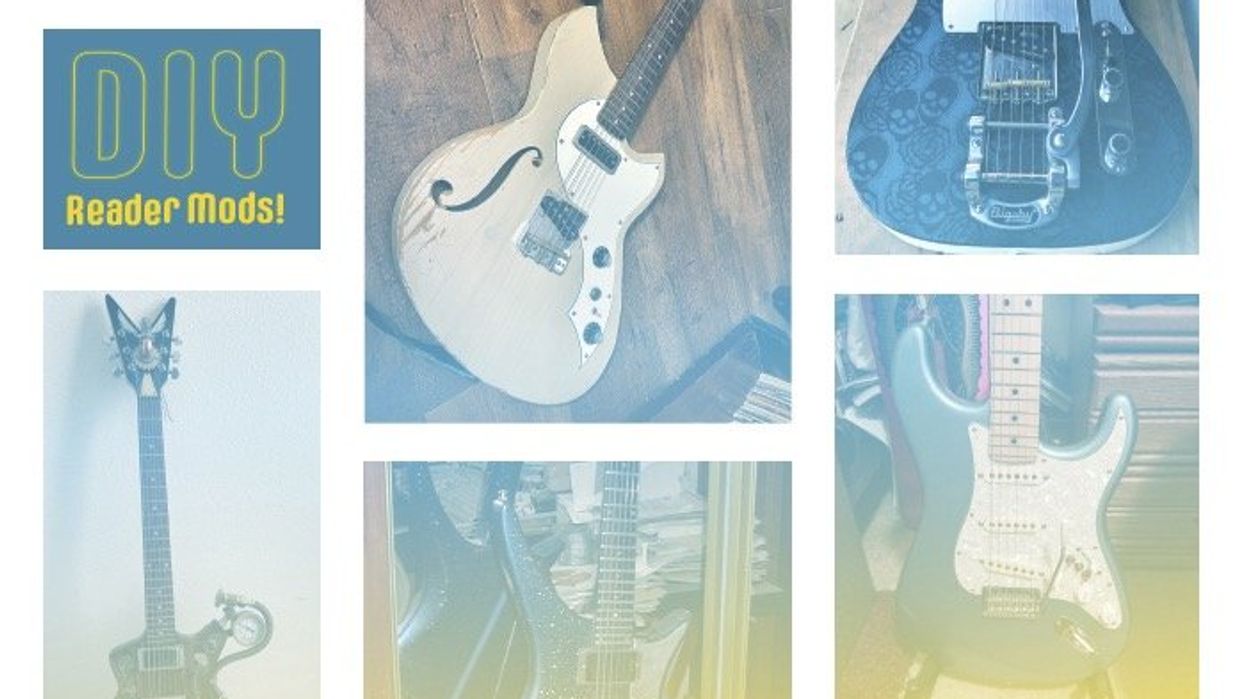
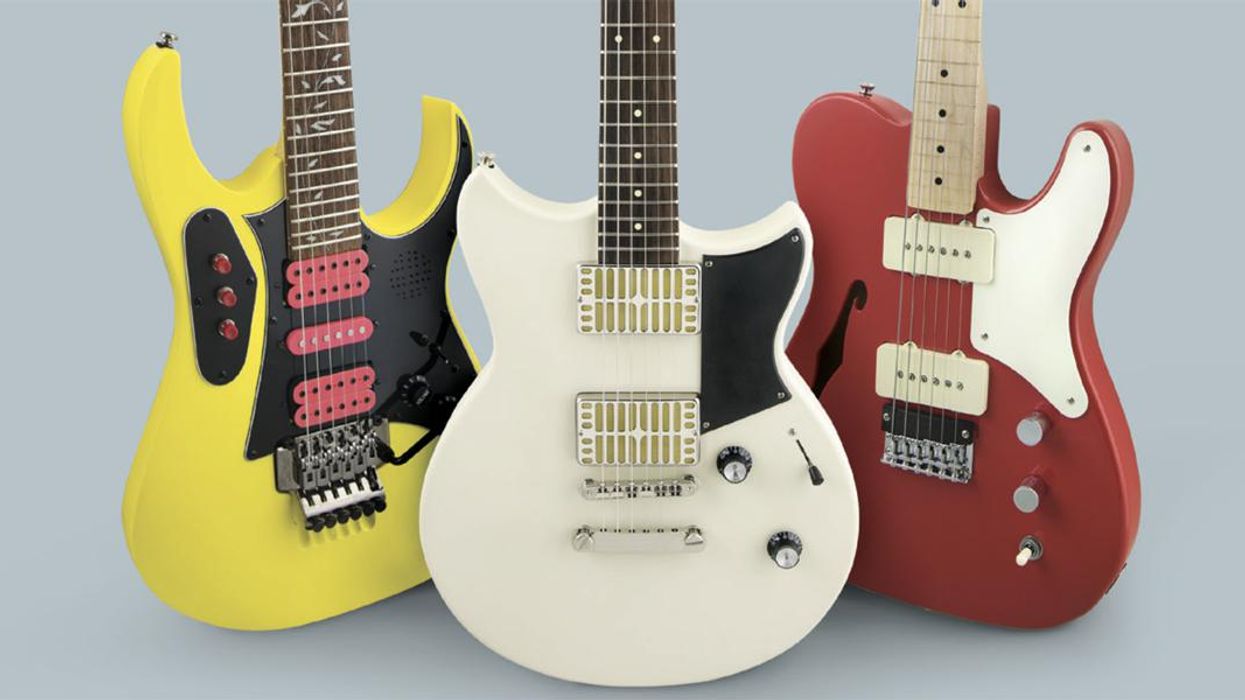
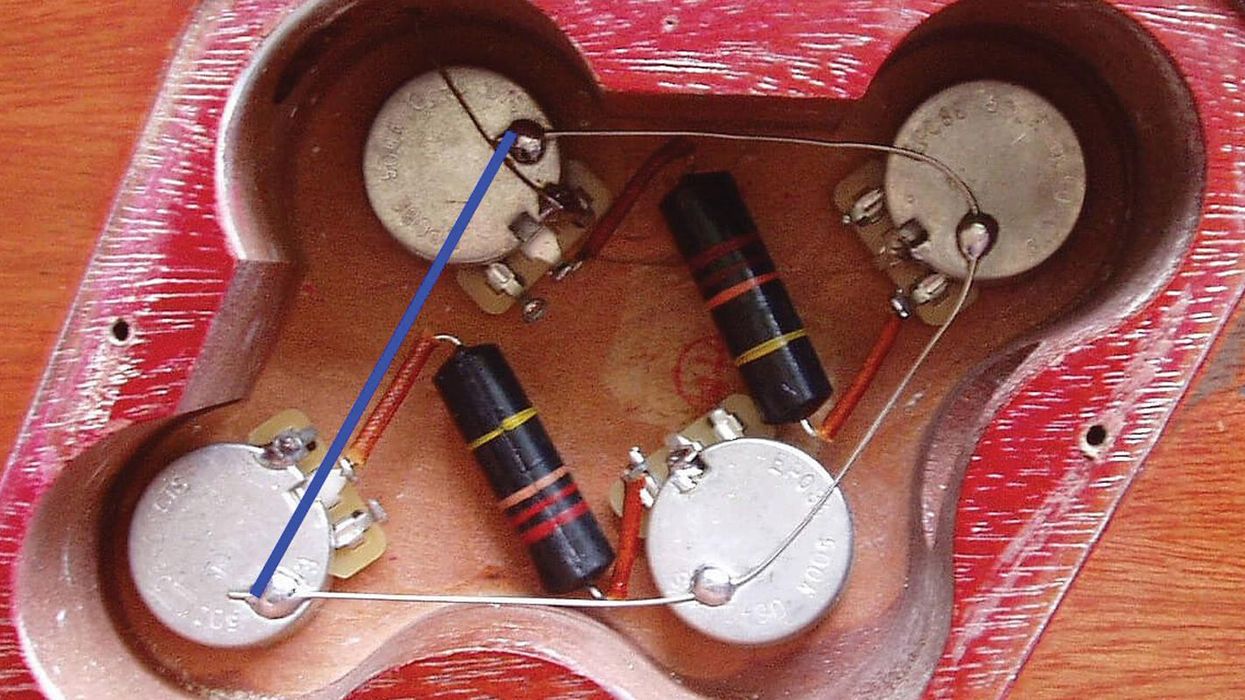
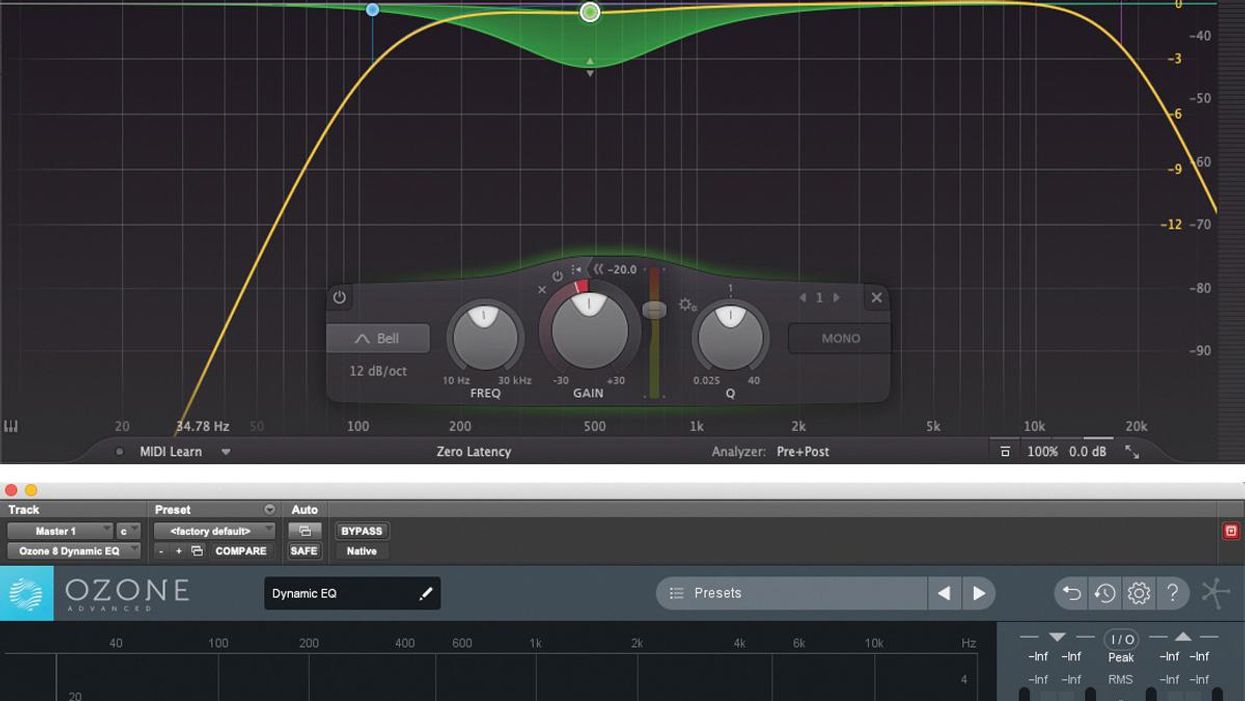
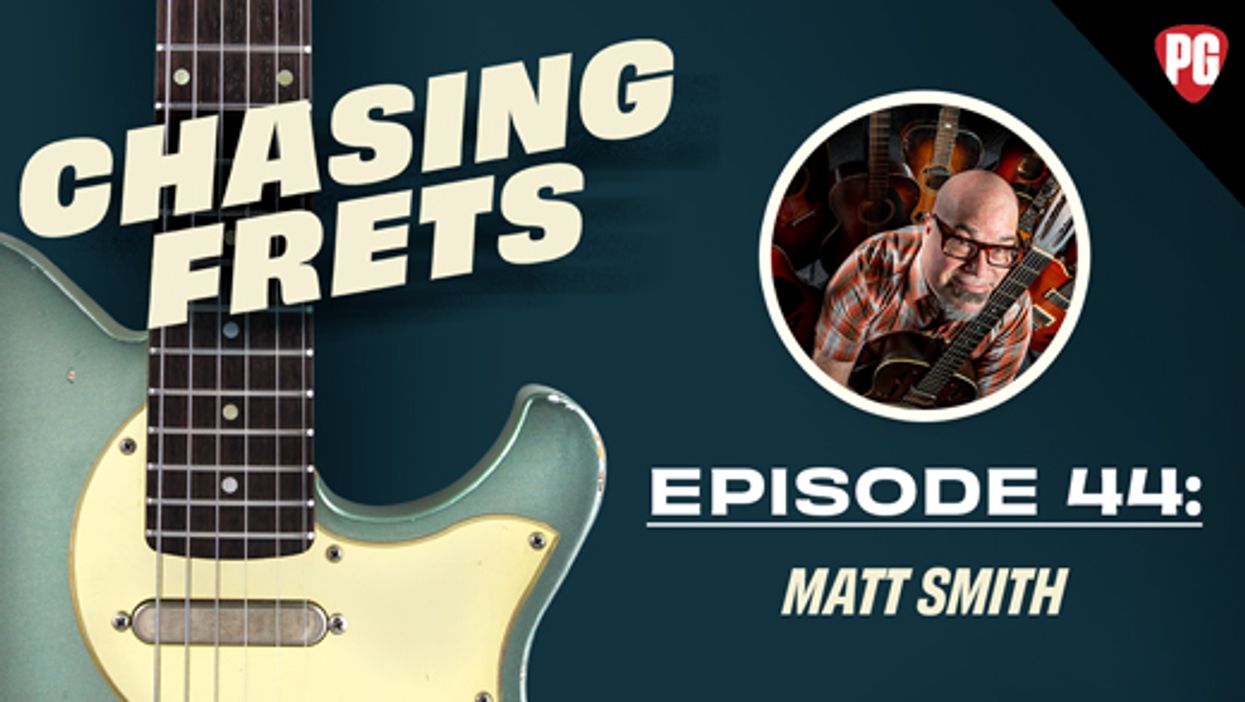




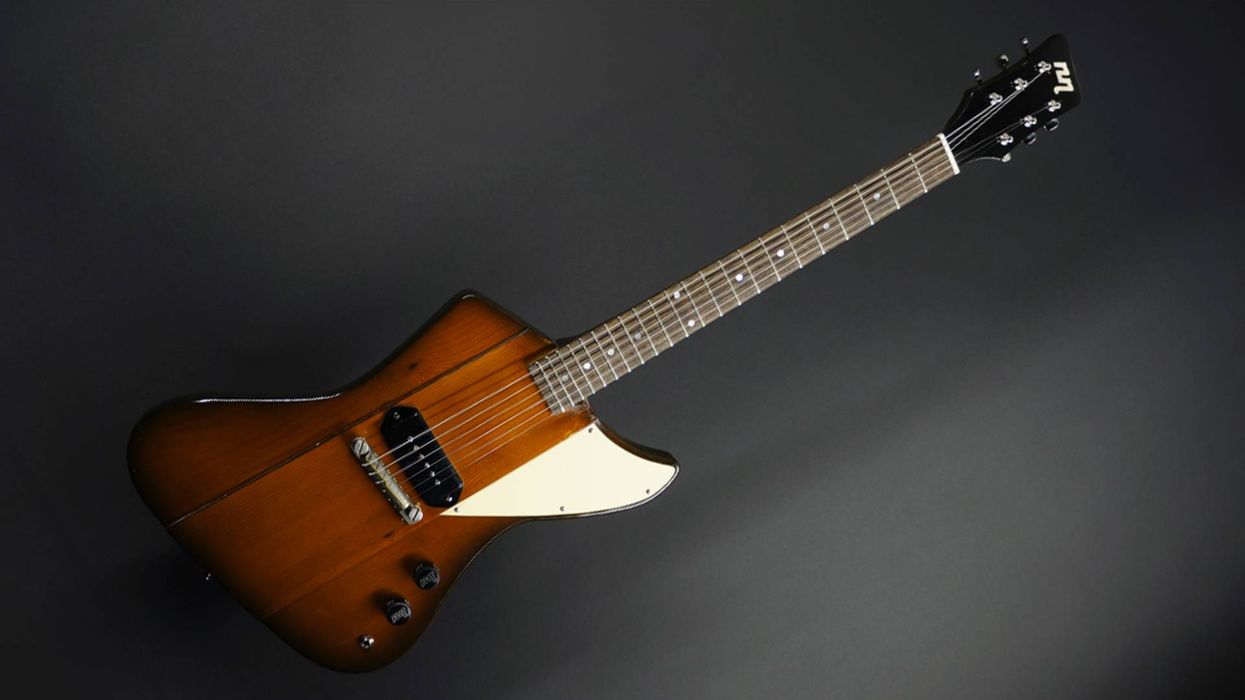



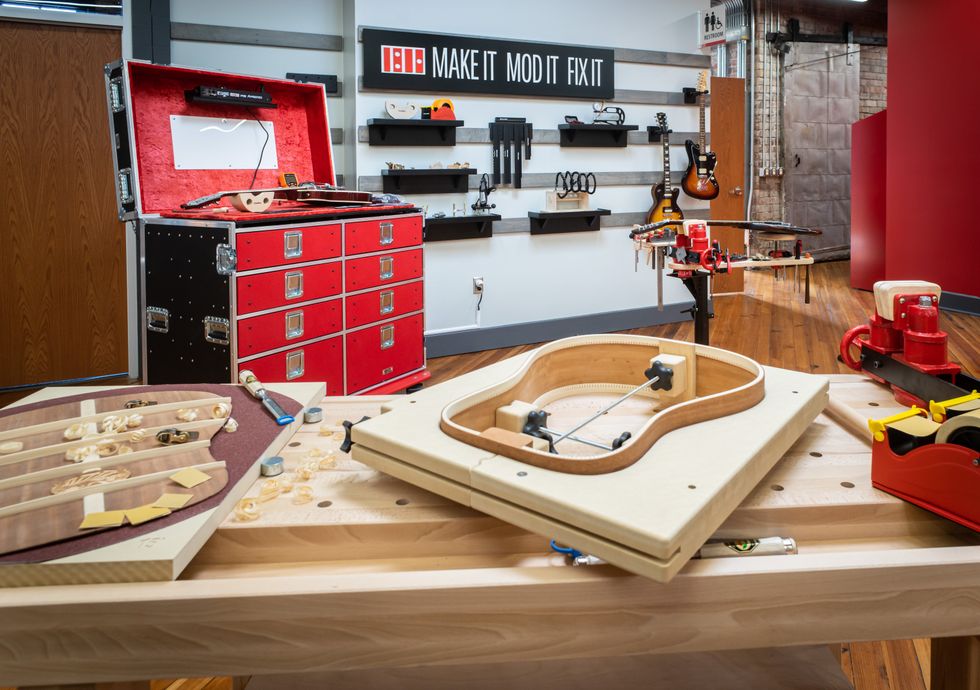

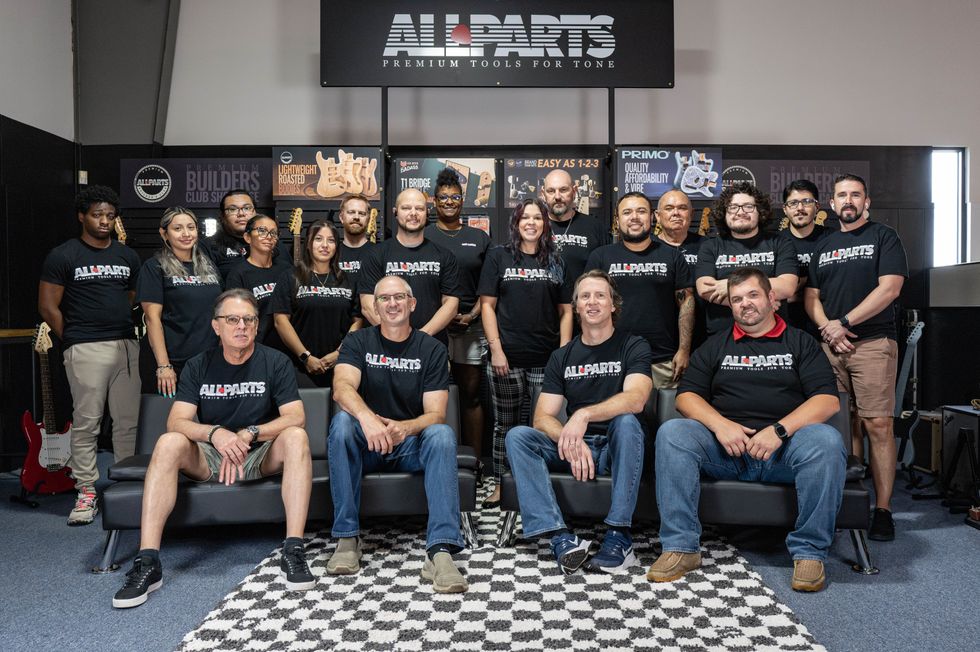 The Allparts team at their Houston warehouse, with Dean Herman in the front row, second from right.Photo by Enrique Rodriguez
The Allparts team at their Houston warehouse, with Dean Herman in the front row, second from right.Photo by Enrique Rodriguez